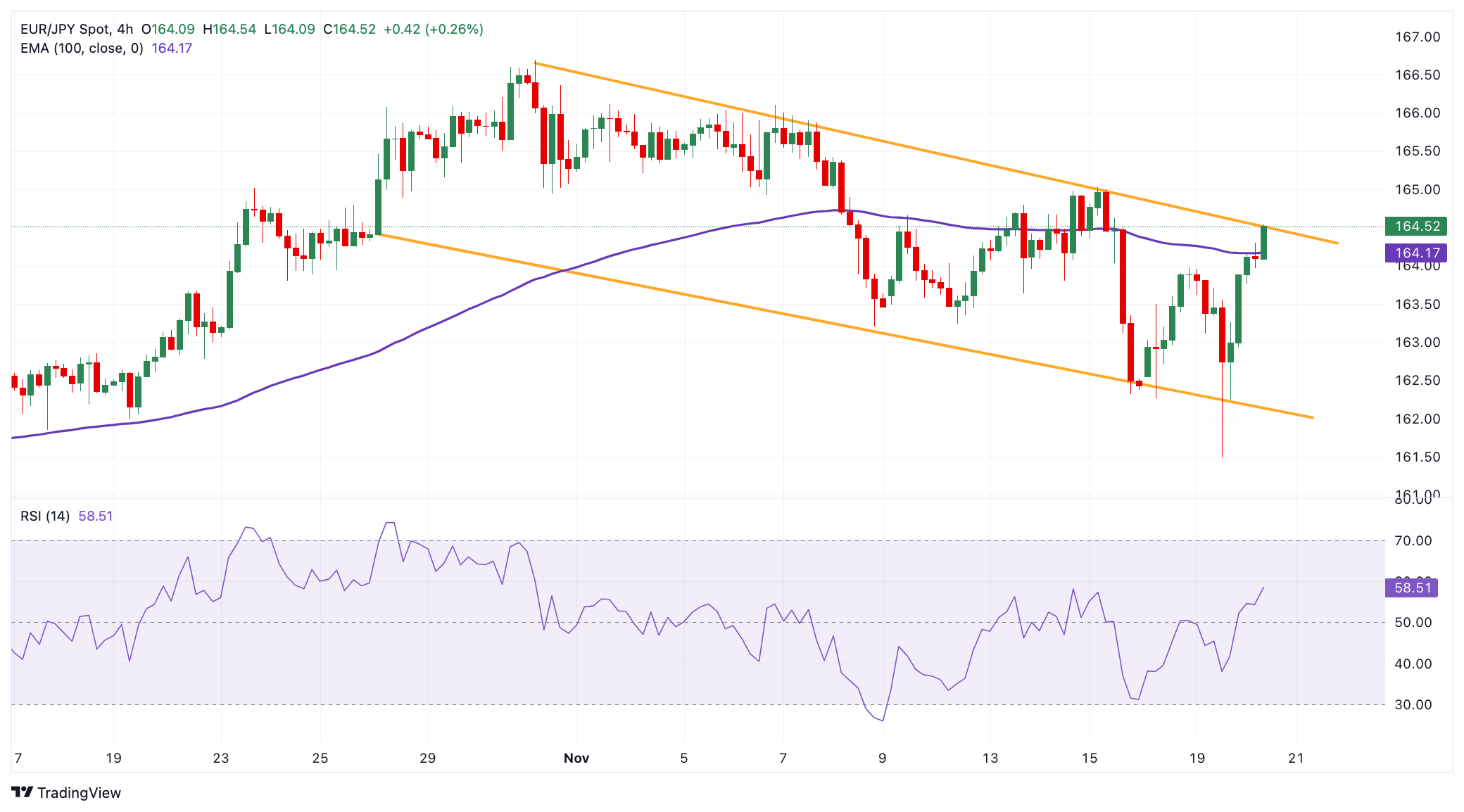EUR/JPY Price Forecast: Resumes its uptrend above 164.00


- EUR/JPY attracts some buyers to around 164.30 in Wednesday’s early European session, adding 0.43% on the day.
- The cross resumes the upside above the 100-period EMA with the bullish RSI indicator.
- The first upside barrier is seen at 164.55; the initial support level is located at 164.17.
The EUR/JPY cross resumes the upside to near 164.30 during the early European session on Wednesday. The lack of clear guidance on the next rate hike timing by the Bank of Japan (BoJ) weighs on the Japanese Yen (JPY) and acts as a tailwind for the cross. However, the escalating tensions of the Russia-Ukraine war could boost the safe-haven flows, benefiting the JPY.
According to the 4-hour chart, EUR/JPY resumes the bullish trends as the cross climbs above the key 100-period Exponential Moving Average (EMA). Furthermore, the 14-day Relative Strength Index (RSI) is located above the midline near 57.30, indicating that further upside looks favorable in the near term.
The upper boundary of the descending trend channel of 164.55 acts as an immediate resistance level for the cross. A sustained move above this level could see a rally to the 165.00-165.05 zone, representing the psychological level and the high of November 15. The next hurdle to watch is 166.10, the high of November 6.
On the flip side, the initial support level for EUR/JPY emerges near the 100-period EMA at 164.17. A breach of the mentioned level could pave the way to 163.21, the low of November 8. The additional downside filter to watch is 162.35, the low of November 16. Extended losses could expose 162.15, the lower limit of the trend channel.

EUR/JPY 4-hour chart
Japanese Yen FAQs
What key factors drive the Japanese Yen?
The Japanese Yen (JPY) is one of the world’s most traded currencies. Its value is broadly determined by the performance of the Japanese economy, but more specifically by the Bank of Japan’s policy, the differential between Japanese and US bond yields, or risk sentiment among traders, among other factors.
How do the decisions of the Bank of Japan impact the Japanese Yen?
One of the Bank of Japan’s mandates is currency control, so its moves are key for the Yen. The BoJ has directly intervened in currency markets sometimes, generally to lower the value of the Yen, although it refrains from doing it often due to political concerns of its main trading partners. The BoJ ultra-loose monetary policy between 2013 and 2024 caused the Yen to depreciate against its main currency peers due to an increasing policy divergence between the Bank of Japan and other main central banks. More recently, the gradually unwinding of this ultra-loose policy has given some support to the Yen.
How does the differential between Japanese and US bond yields impact the Japanese Yen?
Over the last decade, the BoJ’s stance of sticking to ultra-loose monetary policy has led to a widening policy divergence with other central banks, particularly with the US Federal Reserve. This supported a widening of the differential between the 10-year US and Japanese bonds, which favored the US Dollar against the Japanese Yen. The BoJ decision in 2024 to gradually abandon the ultra-loose policy, coupled with interest-rate cuts in other major central banks, is narrowing this differential.
How does broader risk sentiment impact the Japanese Yen?
The Japanese Yen is often seen as a safe-haven investment. This means that in times of market stress, investors are more likely to put their money in the Japanese currency due to its supposed reliability and stability. Turbulent times are likely to strengthen the Yen’s value against other currencies seen as more risky to invest in.





.jpg)